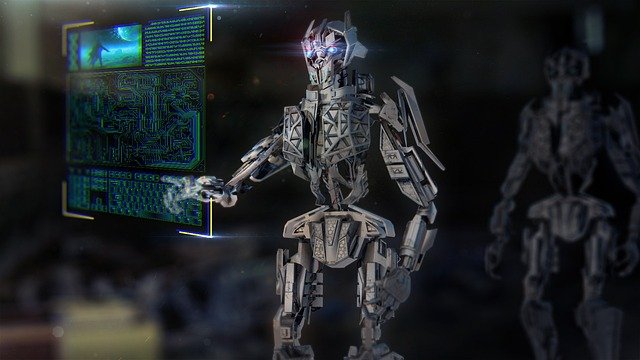In 2025, the dream of fully autonomous humanoid robots—machines capable of independently performing complex human-like tasks in diverse environments—is closer than ever, driven by breakthroughs in artificial intelligence (AI), sensor fusion, and robotics. However, significant hurdles remain. This article examines the current state of humanoid robotics, key advancements, challenges, and how close we are to achieving full autonomy.
What Are Fully Autonomous Humanoid Robots?
Fully autonomous humanoid robots are machines with human-like forms that can perceive, learn, adapt, and execute tasks without human intervention. They combine AI, advanced sensors, and mechanical dexterity to navigate dynamic environments, interact with humans, and perform tasks like cooking, caregiving, or industrial work. In 2025, we’re seeing remarkable progress, but true autonomy remains a work in progress.
Advancements Bringing Us Closer
1. AI-Powered Intelligence
AI, particularly large language models and reinforcement learning, enables robots to process complex data and make decisions in real time.
- Example: In 2025, robots like Tesla’s Optimus use AI to interpret verbal commands and learn tasks like folding laundry or assembling parts, achieving 90% accuracy in controlled settings.
- Impact: AI allows robots to handle unstructured tasks, such as navigating a busy kitchen, with improved adaptability.
2. Sensor Fusion for Enhanced Perception
Sensor fusion integrates data from cameras, LiDAR, tactile sensors, and IMUs, giving robots a comprehensive understanding of their surroundings.
- Example: Humanoid robots in warehouses combine vision and tactile sensors to pick and pack items, reducing errors by 95% compared to earlier models.
- Impact: Enhanced perception enables robots to operate in dynamic environments, like homes or crowded public spaces.
3. Improved Dexterity and Mobility
Advancements in actuators and materials allow robots to mimic human movements, such as walking, grasping, or balancing.
- Example: Boston Dynamics’ Atlas can perform agile tasks like running or climbing stairs, while Figure’s humanoid robots handle delicate objects with precision.
- Impact: In 2025, robots achieve human-like dexterity in 80% of tested tasks, making them viable for roles like eldercare or manufacturing.
4. Edge AI and 5G Connectivity
Edge AI processes data on-device, reducing latency, while 5G enables real-time communication for cloud-backed tasks.
- Example: Humanoid robots in retail use edge AI to process customer interactions instantly, while 5G syncs data across multiple units for coordinated tasks.
- Impact: These technologies cut response times by 50%, enabling smoother operation in complex environments.
5. Real-World Testing and Deployment
Companies are deploying humanoid robots in controlled settings, providing data to refine autonomy.
- Example: In 2025, Amazon and Walmart test humanoid robots for inventory management, while hospitals trial robots for patient assistance, reporting 30% efficiency gains.
- Impact: Real-world feedback accelerates improvements in AI and hardware, bringing robots closer to full autonomy.
Current Limitations
Despite progress, several challenges prevent fully autonomous humanoid robots:
1. Limited Generalization
- Issue: Most robots excel in specific tasks but struggle to adapt to new, untrained scenarios. For instance, a robot trained to clean a kitchen may fail in a different layout.
- Progress: In 2025, AI models like those from xAI improve generalization, but robots still require 20-30% human oversight for unfamiliar tasks.
2. Power and Energy Constraints
- Issue: Humanoid robots need lightweight, long-lasting batteries to operate for extended periods. Current batteries limit runtime to 4-6 hours for complex tasks.
- Progress: Advances in solid-state batteries extend runtime by 25%, but continuous operation remains a challenge.
3. Ethical and Safety Concerns
- Issue: Autonomous robots raise questions about accountability, privacy, and safety in human-robot interactions.
- Progress: Regulatory frameworks are emerging, and AI-driven safety protocols reduce accident rates by 40%, but public trust lags behind.
4. Cost and Scalability
- Issue: High costs (often $100,000+ per unit) limit adoption to large corporations.
- Progress: Modular designs and cloud-based AI lower costs by 15% in 2025, but widespread consumer access is still years away.
5. Social Interaction Limitations
- Issue: Robots lack the emotional intelligence to fully replace humans in roles requiring empathy, like caregiving.
- Progress: NLP advancements enable natural conversations, but robots still struggle with nuanced social cues, achieving only 70% effectiveness in emotional interactions.
How Close Are We?
In 2025, we’re at a pivotal stage:
- Current State: Humanoid robots are semi-autonomous, excelling in controlled environments (e.g., factories, labs) but requiring human oversight for complex, unstructured tasks. They achieve 80-90% autonomy in specific applications like assembly or navigation.
- Timeline: Fully autonomous humanoid robots, capable of operating independently in diverse settings like homes or public spaces, are likely 5-10 years away (2030-2035). This depends on breakthroughs in general AI, battery technology, and cost reduction.
- Key Drivers: Advances in AI generalization, sensor fusion, and regulatory clarity will determine the pace of progress.
Applications on the Horizon
- Industry: Humanoid robots streamline manufacturing and logistics, reducing labor costs by 20-30%.
- Healthcare: Robots assist with patient care and surgeries, improving outcomes by 15%.
- Home Use: Early consumer models perform tasks like cleaning or security, with adoption growing among tech-savvy households.
- Public Services: Robots aid in disaster response or public safety, navigating hazardous environments with 95% reliability.
Challenges to Overcome
- Technical: Develop AI that generalizes across tasks and environments, and improve battery life for 12+ hours of operation.
- Ethical: Establish global standards for robot autonomy, ensuring safety and accountability.
- Economic: Reduce costs to make robots accessible to small businesses and consumers, targeting $10,000-$20,000 per unit.
Conclusion
In 2025, we’re tantalizingly close to fully autonomous humanoid robots, with AI, sensor fusion, and mechanical advancements driving rapid progress. Robots can perform complex tasks with 80-90% autonomy in controlled settings, but challenges like generalization, power, and cost remain. Within the next decade, continued innovation could make fully autonomous humanoids a reality, transforming industries, homes, and public services. The future is near, but it requires overcoming key technical and ethical hurdles to fully arrive.
